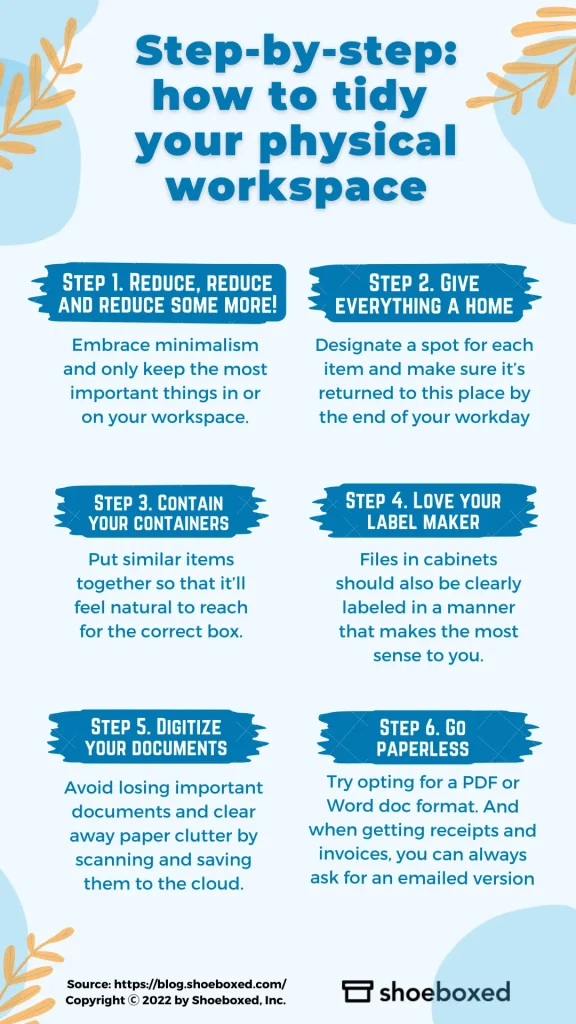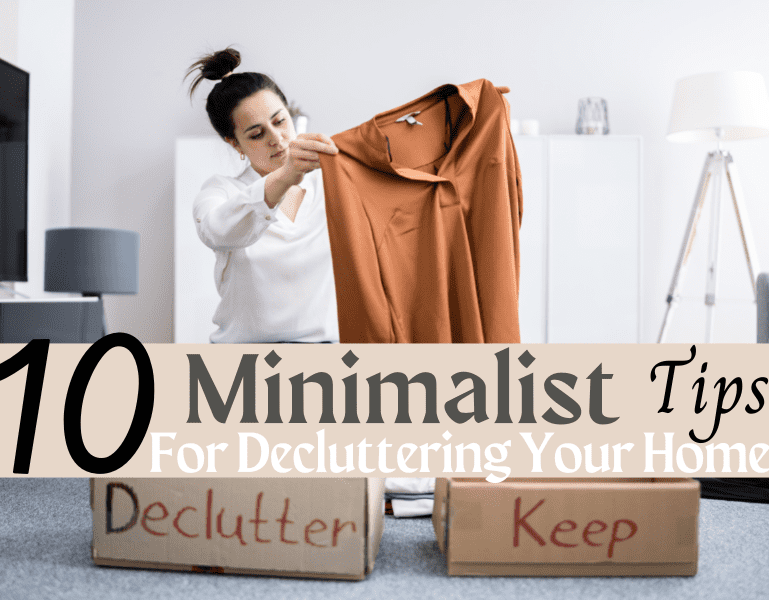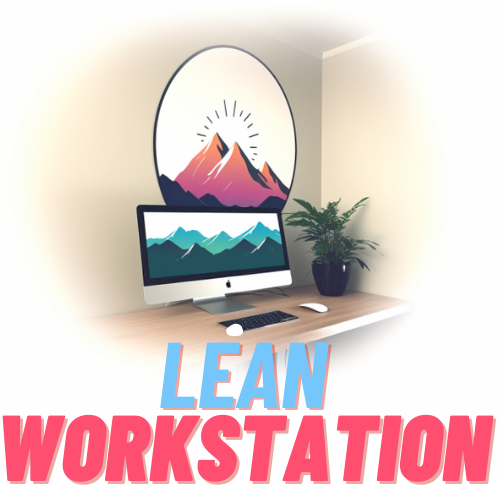
In this article, you will learn about effective decluttering techniques specifically designed for minimalists. Whether you’re a seasoned minimalist or just starting your journey towards a clutter-free life, these techniques will help you maximize your productivity by simplifying your surroundings. By implementing these strategies, you’ll not only create a more organized and serene space but also improve your overall focus and energy levels. Get ready to declutter and create an environment that supports your minimalistic lifestyle!

This image is property of ecosguide.com.
Benefits of Effective Decluttering
In today’s fast-paced and digital-driven world, it can be easy to feel overwhelmed and stressed out by the constant influx of information and possessions. Effective decluttering techniques can help you regain control over your physical and digital spaces, leading to increased focus, enhanced productivity, and reduced stress and anxiety. Embracing minimalism and adopting a mindful approach towards consumption can further amplify the benefits of decluttering. In this article, we will explore the various aspects of effective decluttering and how it can maximize your productivity as a minimalist.
Increased focus and concentration
One of the primary benefits of decluttering is the improvement in your ability to focus and concentrate. A cluttered environment can be visually distracting and can easily disrupt your train of thought. By organizing your physical space and removing unnecessary items, you create a clean and clear workspace that allows for better focus and concentration. This enhanced focus can have a significant impact on your productivity and the quality of your work.
Enhanced productivity and efficiency
Another advantage of effective decluttering is the improvement in productivity and efficiency. When your physical and digital spaces are clutter-free, it becomes much easier to locate and access the resources and tools you need to complete your tasks. You spend less time searching for misplaced items or sorting through a mess, and instead, can devote more time and energy to actually getting things done. This increased efficiency can help you accomplish more in less time and give you a sense of control and accomplishment.
Reduced stress and anxiety
Clutter has a way of accumulating not just in our physical space, but also in our minds. An overloaded and disorganized environment can contribute to feelings of stress and overwhelm. By decluttering and simplifying your surroundings, you create a sense of calm and tranquility. The act of decluttering itself can be therapeutic, allowing you to let go of unnecessary possessions and the emotional baggage that may come with them. A clutter-free space promotes a sense of clarity and reduces the mental burden, leading to reduced stress and anxiety levels.
Understanding Minimalism
Defining minimalism
Minimalism is often associated with owning as few material possessions as possible. However, it is important to note that minimalism is not just about getting rid of things. It is a conscious and intentional lifestyle choice that focuses on simplicity and prioritizing what truly matters. Minimalism is about living with intention, being mindful of your choices, and cultivating a sense of contentment with less.
The philosophy behind minimalism
At its core, minimalism is a reaction to the consumerist culture that pervades our society. It challenges the notion that happiness and fulfillment can be attained through the accumulation of material possessions. Minimalism encourages you to question the value and necessity of the things you own and to let go of excess in order to create space for experiences and relationships that truly bring joy and fulfillment.
Benefits of embracing minimalism
Embracing minimalism not only contributes to a clutter-free physical and digital space but also has numerous other benefits. By shifting your focus from material possessions to experiences and relationships, you cultivate gratitude for what you have and develop a deeper sense of contentment. Minimalism encourages you to actively seek out value and meaning in your life, leading to increased happiness and overall well-being. It also promotes a more sustainable lifestyle by reducing consumption and minimizing waste.
Starting the Decluttering Process
Setting clear goals and objectives
Before diving into the decluttering process, it is important to set clear goals and objectives for yourself. Take some time to reflect on why you want to declutter and what you hope to achieve. Are you looking to create a more organized workspace? Do you want to reduce the amount of time spent searching for things? By defining your goals, you can stay focused and motivated throughout the decluttering process.
Creating a decluttering plan
Once you have established your goals, it is helpful to create a decluttering plan. Break down the process into smaller tasks and set a timeline for completion. This will prevent you from feeling overwhelmed and allow you to tackle the decluttering process systematically. Start with one area or category at a time, such as your desk or wardrobe, and work your way through the space.
Identifying essential and non-essential items
As you go through your possessions, it is important to differentiate between essential and non-essential items. Essential items are those that you use regularly and bring value to your life. Non-essential items, on the other hand, are things that no longer serve a purpose or bring joy. Be honest with yourself and let go of items that are cluttering your space and weighing you down. Remember that the goal is to create a space that is functional and conducive to productivity.
Organizing and Sorting Techniques
Categorizing belongings
Once you have identified the essential items, it is time to organize and sort them. Categorizing your belongings can help you create a systematic and logical organization system. Group similar items together, such as office supplies, clothing, or electronic devices. This will make it easier to locate items when you need them and reduce the likelihood of clutter accumulating in the future.
Utilizing the KonMari Method
The KonMari Method, popularized by Japanese organizing consultant Marie Kondo, is a decluttering technique that focuses on keeping only items that spark joy. The method involves going through your possessions one by one and asking yourself if each item brings you joy. If it doesn’t, it is time to let it go. This approach emphasizes the emotional connection we have with our belongings and encourages us to surround ourselves only with things that truly make us happy.
Implementing the 4-Box Technique
The 4-Box Technique is another valuable tool for decluttering. Label four boxes or bins as “keep,” “donate,” “sell,” and “trash.” As you go through your possessions, place each item into one of the boxes based on its value and usefulness. The “keep” box is for items that you want to keep and continue using, the “donate” box is for things that can be given away to those in need, the “sell” box is for items that can be sold, and the “trash” box is for items that are no longer usable or salvageable.

This image is property of 149363996.v2.pressablecdn.com.
Streamlining Digital Clutter
Organizing digital files and folders
In today’s digital age, it is not just our physical spaces that can become cluttered, but also our digital spaces. Take some time to organize your digital files and folders in a logical and intuitive manner. Create folders based on categories or projects and develop a naming convention that works for you. This will make it easier to find files when you need them and prevent the accumulation of digital clutter.
Deleting unnecessary emails and documents
In addition to organizing digital files, it is crucial to regularly delete unnecessary emails and documents. A cluttered inbox or digital storage can be overwhelming and inefficient. Establish a habit of regularly going through your emails and deleting or archiving those that are no longer needed. Similarly, clean up your computer’s storage by removing unnecessary files and applications.
Utilizing productivity apps and tools
There are numerous productivity apps and digital tools available that can help you streamline and organize your digital clutter. These tools can assist in managing tasks, scheduling, note-taking, and file organization. Find the ones that align with your preferences and integrate them into your workflow. However, be mindful not to overwhelm yourself with too many apps and tools, as it can lead to digital clutter of its own.
Creating Functional Spaces
Designing an efficient workspace
A functional and efficient workspace is essential for maximizing productivity. Start by decluttering your desk and removing any unnecessary items. Keep only the tools and resources that you use on a regular basis within reach. Additionally, optimize your desk layout to minimize distractions and maximize workflow. Keep cables tidy, add storage solutions like drawers or shelves, and incorporate ergonomic principles for a comfortable and productive workspace.
Optimizing storage solutions
In order to maintain a clutter-free environment, it is important to optimize your storage solutions. Utilize storage bins, folders, shelves, or baskets to keep everything in its designated place. Make use of vertical space and invest in organizers that fit your needs. By having designated storage areas for different categories of items, you can easily find and return things to their proper places, eliminating the chance of clutter buildup.
Utilizing minimalistic interior design
A minimalistic interior design aesthetic can contribute to a sense of calm and clarity in your living and working spaces. Embrace clean lines, neutral colors, and simplicity in your furniture and decor choices. Avoid excessive ornamentation and choose pieces that serve a purpose and bring joy. By adopting a minimalist approach to your surroundings, you create a visual environment that promotes focus and productivity.
This image is property of embed.filekitcdn.com.
Adopting Mindful Consumption
Valuing experiences over possessions
One of the fundamental principles of minimalism is valuing experiences over possessions. Instead of constantly seeking out new things to acquire, focus on cultivating experiences and memories. Invest in activities that bring you joy, such as spending time with loved ones, pursuing hobbies, or exploring nature. By shifting your mindset from material possessions to meaningful experiences, you create space for what truly matters in your life.
Developing mindful shopping habits
To prevent the accumulation of unnecessary possessions, it is essential to develop mindful shopping habits. Before making a purchase, ask yourself if the item aligns with your values and if it will truly bring value to your life. Consider the long-term impact of the purchase and whether it is a necessity or a fleeting desire. By becoming more conscious of your shopping habits, you can avoid impulse purchases and make more intentional choices.
Practicing gratitude for what you already have
Cultivating a mindset of gratitude is an integral part of living a minimalist lifestyle. Take time each day to reflect on and appreciate the things you already have. Instead of constantly seeking out the next best thing, focus on the abundance that already exists in your life. Gratitude can shift your perspective and help you realize that true contentment comes from within, rather than from external possessions.
Maintaining a Decluttered Lifestyle
Regularly reviewing and reassessing belongings
Once you have decluttered and organized your space, it is important to regularly review and reassess your belongings. Set aside time periodically to go through your possessions and identify any items that are no longer serving a purpose or bringing you joy. By making decluttering a regular habit, you can prevent the accumulation of unnecessary belongings and maintain a clutter-free environment.
Avoiding impulse purchases
One of the challenges of maintaining a decluttered lifestyle is resisting the temptation of impulse purchases. Before making a purchase, take a moment to pause and evaluate whether it aligns with your values and goals. Consider the long-term impact of the purchase and whether it will truly add value to your life. By avoiding impulse purchases, you can prevent the re-entry of clutter into your space.
Implementing daily decluttering habits
In addition to periodic decluttering sessions, it is beneficial to implement daily decluttering habits. Develop a simple routine of tidying up your space at the end of each day. Put things back in their designated places, discard any waste or unnecessary items, and keep surfaces clean and clear. By dedicating a few minutes each day to maintaining order, you can prevent clutter from accumulating and maintain a productive environment.

This image is property of i0.wp.com.
Overcoming Challenges and Obstacles
Letting go of sentimental items
One of the biggest challenges in the decluttering process is letting go of sentimental items. It can be difficult to part with belongings that hold cherished memories or sentimental value. However, it is important to remember that memories reside within us and not within the physical objects themselves. Take the time to acknowledge the emotions attached to these items and find ways to honor the memories without holding onto the physical possessions.
Dealing with emotional attachment
In addition to sentimental items, many of us develop emotional attachments to our possessions. We may associate our self-worth or identity with certain objects, making it difficult to let go. It is essential to recognize that our value as individuals is not determined by our belongings. Practice self-compassion and remind yourself that it is okay to let go of things that no longer serve a purpose or bring joy. Focus on the freedom and mental clarity that comes with decluttering.
Managing the fear of missing out (FOMO)
Another obstacle to decluttering can be the fear of missing out (FOMO). We may hold onto things out of fear that we might need them in the future or because we feel like we’re giving up on certain opportunities. It is important to adopt a mindset of abundance and trust in your ability to adapt and find solutions when needed. Remember that by decluttering, you are creating space for new experiences and possibilities to enter your life.
Conclusion
Embracing minimalism and effective decluttering techniques can significantly improve productivity and overall well-being. By simplifying your physical and digital spaces, you can free yourself from distractions and focus on what truly matters. The journey towards decluttering is a continuous process that requires conscious effort and regular maintenance, but the benefits are worth it. Start today and experience the transformative power of decluttering. Remember, it’s not just about clearing out physical possessions, but about creating a space and mindset that promotes productivity, enhances focus, reduces stress, and cultivates a sense of contentment and fulfillment.

This image is property of i0.wp.com.
